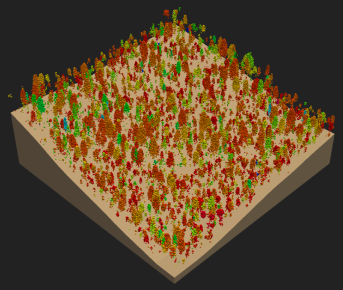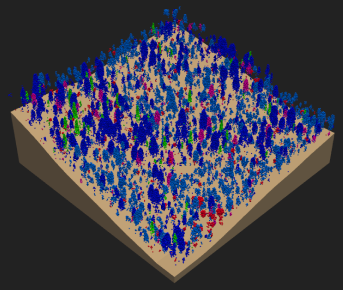What Is FastFuels?
FastFuels is a tool for providing 3D vegatative fuels data to the next generation of wildfire simulation models. With FastFuels, you can quickly generate fuels data to meet the needs of prescribed fire management, silvicultural prescription design, scenario simulation, fire effects, and fire risk assessments.
How do I use FastFuels?
FastFuels offers a web application with a graphical user interface for generating and exporting fuels data. Additionally, we offer a Python SDK for interacting with FastFuels programmatically.
Do I need to write code?
Nope! All of FastFuel’s functionality is included in the web interface. You can create, modify, and export fuels data with an intuitive web browser application. No installation or payments necessary.
Why use the Python SDK?
Are you interested in ensemble model runs? Do you need to sample fuels for a large number of project areas? Are you a researcher interested in a range of silvicultural treatments? All of these use cases are good candidates for the Python SDK. Any of these tasks can be done with the web application, but we also provide a fully-functional Python SDK to aid users that need a more powerful tool for managing and acquiring fuels data.
What data does FastFuels provide?
FastFuels offers several formats for exporting fuels data. First, you can download a CSV list of fuels distributed over a selected landscape. Additionally, you can export fuels data into formats expected by most fire simulation software. This data comes in the form of common fuel parameters like bulk density, fuel moisture content, surface area to volume ratio, and fuel depth.
How are fuels data generated?
FastFuels offers a variety of tools for generating accurate representations of 3D fuels anywhere in the continental United States. Our baseline fuels data is derived from the Forest Inventory Analysis imputed plots database. Additionally, you can provide FastFuels with additional data such as LiDAR or plot measurements to improve the accuracy over a specific geographic area. Please see the roadmap for additional information on data integration.
Which fire models can I use?
FastFuels currently exports fuels data to a QUIC-Fire ready file format. In addition, our roadmap has plans for integration with FireTec and the Fire Dynamics Simulator (FDS). A key feature of FastFuels is interoperability between data and fire models. Fuels data is related to a geographic location, not any specific file format or model input.





